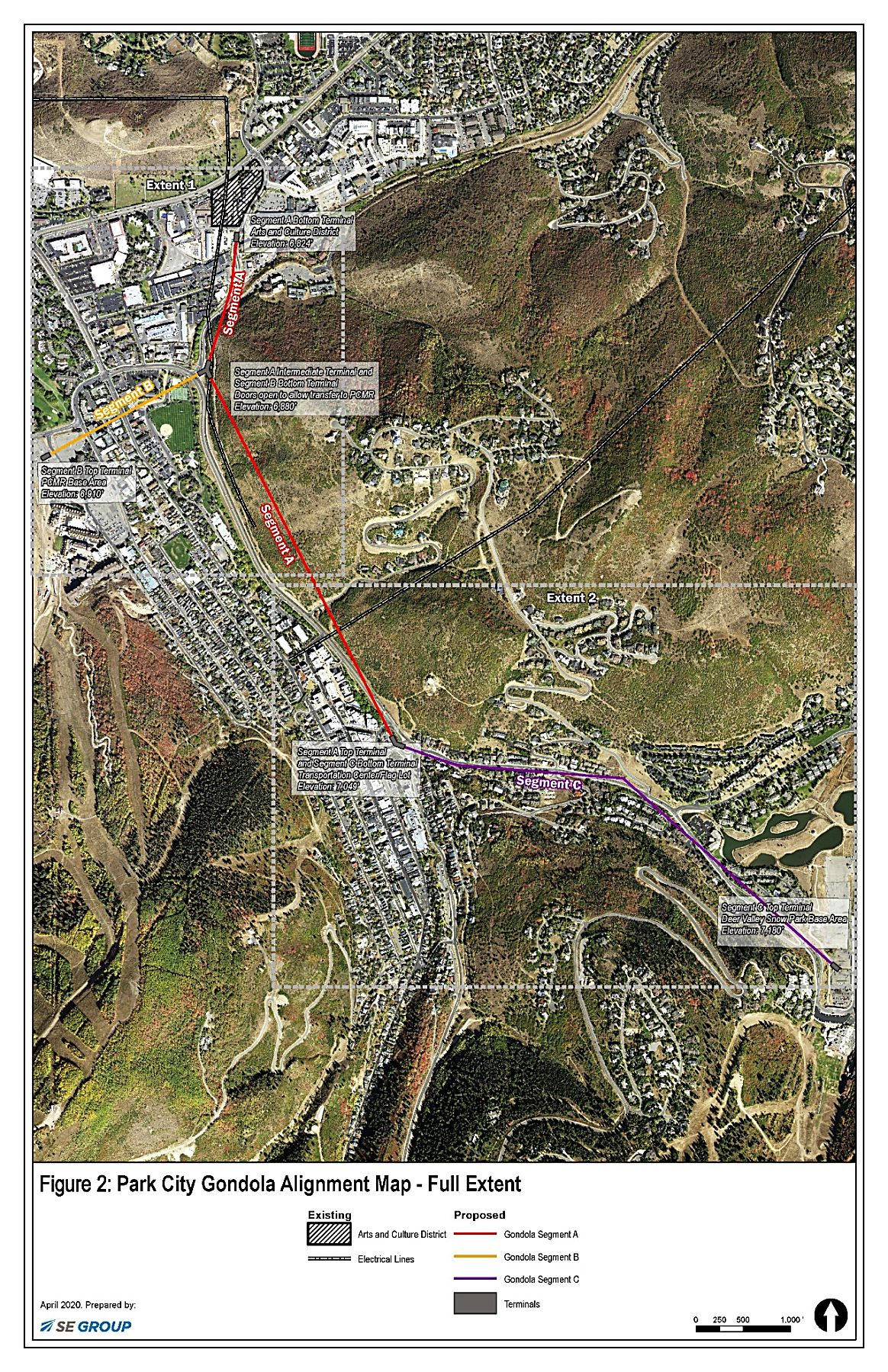The construction of a gondola in a mountain resort like Park City can be celebrated as a desirable option for skiers and snowboarders, something that could create a competitive edge over other destinations.
Or, one could be seen as a new sort of transit option, carrying commuters as a traffic-fighting measure.
But a gondola would also be another man-made object, and a moving one at that, in the vicinity of residential properties and other buildings.
As Park City leaders continue to discuss the possibilities of aerial transit, essentially creating a gondola network, they will eventually need to address the scenario of the gondola alignments coming close to privately held properties in a variety of locations.
City Hall is in early talks about aerial transit, with the major decisions likely months away, at the earliest. The idea that potential alignments run close to private properties has not been heavily addressed, but a consultant retained by the municipal government, SE Group, raised the topic in an important report that was forwarded to Mayor Andy Beerman and the Park City Council in anticipation of a recent meeting.
The consultant tallied the number of private properties within a 100-foot corridor of the conceptual gondola alignments. The list would be in addition to the potential Deer Valley Resort and Park City Mountain Resort gondola sections that would be on private property.
According to the consultant’s research, there are 338 private properties within a 100-foot distance of the conceptual alignments. There are 25 buildings within a 70-foot distance of the alignments, a separation that is important for fire-safety purposes.
The research outlined a gondola system linking Old Town, the base area at Park City Mountain Resort, the Snow Park area at Deer Valley Resort and the planned location of an arts and culture district along Kearns Boulevard and Bonanza Drive. The route map involves three segments, labeled ‘A,’ ‘B’ and ‘C.’
Segment ‘C’ would run close to more private properties than the other two combined. The research shows there are 183 private properties within the 100-foot distance of the segment ‘C’ alignment. There are 18 buildings within the 70-foot distance.
Segment ‘C’ is the section of the concept that would carry people from the vicinity of the Old Town transit center to the Snow Park area of Deer Valley. The concept envisions the route essentially following Deer Valley Drive from Old Town to Snow Park. That section of Deer Valley Drive is heavily developed and includes numerous vacation homes and some year-round residences.
It is an important stretch of road that provides access to places like lower Deer Valley and Deer Crest as well as one of the alternates to drive to and from upper Deer Valley.
“The proposed alignment was chosen to maximize the existing roadway right-of-way and avoid multiple property line intersections, avoid as many structures as possible and to provide the most direct route possible. Even with these considerations, a number of private structures along Deer Valley Drive would be impacted,” the consultant report says.
The report also says, “For Segment C to be feasible, key stakeholders, resorts and property owners would need to be involved to overcome any property rights and siting issues.”
Details about the other two segments include:
• Segment ‘A’ would run within a 100-foot distance of 24 private properties. Two buildings are within the 70-foot distance. Segment ‘A’ is seen as the gondola section that connects a planned arts and culture district City Hall wants to build off the intersection of Bonanza Drive and Kearns Boulevard with a location at or close to the Old Town transit center. Much of the route roughly follows Deer Valley Drive.
• Segment ‘B’ would run within a 100-foot distance of 131 properties. Five buildings are within the 70-foot distance. Segment ‘B’ would link the PCMR base area with a location at or close to the intersection of Deer Valley Drive and Bonanza Drive.
Riders would be able to transfer from Segment ‘A’ to the other two segments.
The consultant attempted to design the segments so they followed existing roads and minimized the proximity to private properties to the extent possible.
The discussions are in such an early stage that it is not clear how closely people or business entities that have properties along the conceptual alignments are following the issue. The mayor and City Council at the recent meeting signaled an interest in continuing the talks, but the elected officials did not delve into the details of the conceptual routes.
A lengthy process would be expected should City Hall pursue an aerial transit system like the one outlined by the consultant. At that point, it would be likely a broad swath of Parkites and property owners would closely follow the talks to learn of the potential impact of the routes.
Park City leaders want to aggressively address the related topics of traffic and transportation after years of mounting complaints about backups, especially on the entryways. An aerial transit system would be an especially ambitious option that would be designed to allow people to board a gondola to reach the mountain resorts, the Main Street core and the arts and culture district rather than driving to those places. The consultant report projected an aerial transit system would cost more than $60 million to build and more than $3 million to operate and maintain on an annual basis. There was talk at the recent City Council meeting of the possibility of assistance with funding should Salt Lake City and the wider region be awarded a Winter Olympics.

